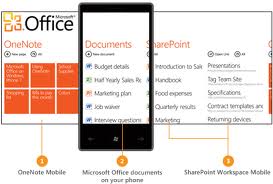 Considering the expansive list of enhancements and new features, I can’t imagine there was a single Windows Phone user that was not excited about the recently released Mango update. We were given native Windows Live, Facebook, Twitter, and LinkedIn integration, as well as enhanced multitasking and Live Tile support, among countless other improvements.
Considering the expansive list of enhancements and new features, I can’t imagine there was a single Windows Phone user that was not excited about the recently released Mango update. We were given native Windows Live, Facebook, Twitter, and LinkedIn integration, as well as enhanced multitasking and Live Tile support, among countless other improvements.
But these features were no surprise, as they were the highly anticipated features that would make WP7 a relevant platform in today’s smartphone market. The purpose of this article is to expose a couple of my favorite new features that were not so well-known prior to release. Not only are these features nice-to-have enhancements, they have simplified and improved day-to-day use of my mobile phone.
Outlook Mobile
Connecting to my company’s Exchange server for email was great before Mango, but the user interface has been pushed over the top after the update. I prefer to configure my Outlook 2010 desktop client to display emails in Conversations, which makes keeping track of email threads much easier. When applied to the smaller screen of my HTC Trophy, this feature really shines. Instead of having to scroll through every email I receive, they are now grouped into threads, as they should be.
While this enhancement is nothing groundbreaking, it does bring Email on WP7 up to par with other mobile phones, further buttressing Microsoft’s relevancy in the rapidly changing mobile market.
SharePoint Mobile
Prior to the Mango update, the native SharePoint functionality was hardly useful, even for SharePoint professionals like me. The original version only worked with SharePoint sites which implemented Forms Based Authentication (FBA), effectively making the feature useless. My company’s Intranet site uses Windows Authentication (NTLM), which meant that I could not access any of my own documents stored in SharePoint, let alone any documents stored on my clients’ SharePoint sites.

While the enhancement was not widely advertised, the Mango update added support for NTLM authentication, and I can now access project documents with a couple taps of my finger. I no longer need access to my laptop and WiFi to get at the documents I need to do my job.
Coupled with the Office Hub integrated into WP7, viewing Office documents on a mobile device has never been so seamless. This is a feature, if marketed properly, that Microsoft could use to gain an edge in the corporate sector, which would undoubtedly help them overtake the iPhone and Android as the mobile platform of choice for day-to-day business.
Conclusion
Microsoft’s not likely to usurp Apple or Android as the #1 mobile platform any time soon, but they are making solid strides to cement themselves in the #3 spot. As the smartphone market continues to grow, the value of a viable third competitor will as well. I love my Windows Phone, and I definitely love how it continues to make my professional life easier. If Microsoft continues to make the right improvements and learns to market these improvements correctly, Windows Phone may establish itself as a successful mobile OS for years to come.

Leave a Reply
You must be logged in to post a comment.